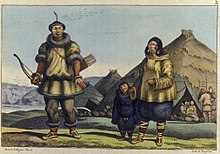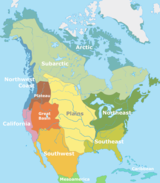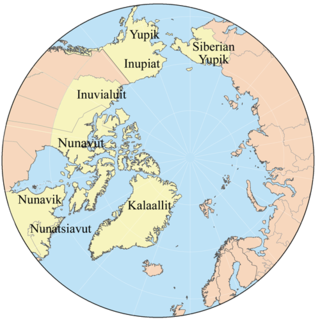
Eskimo is an exonym that refers to two closely related Indigenous peoples: Inuit and the Yupik of eastern Siberia and Alaska. A related third group, the Aleut, who inhabit the Aleutian Islands, are generally excluded from the definition of Eskimo. The three groups share a relatively recent common ancestor, and speak related languages belonging to the Eskaleut language family.

The Inuit languages are a closely related group of indigenous American languages traditionally spoken across the North American Arctic and the adjacent subarctic regions as far south as Labrador. The Inuit languages are one of the two branches of the Eskimoan language family, the other being the Yupik languages, which are spoken in Alaska and the Russian Far East. Most Inuit people live in one of three countries: Greenland, a self-governing territory within the Kingdom of Denmark; Canada, specifically in Nunavut, the Inuvialuit Settlement Region of the Northwest Territories, the Nunavik region of Quebec, and the Nunatsiavut and NunatuKavut regions of Labrador; and the United States, specifically in northern and western Alaska.

The Iñupiat are a group of Indigenous Alaskans whose traditional territory roughly spans northeast from Norton Sound on the Bering Sea to the northernmost part of the Canada–United States border. Their current communities include 34 villages across Iñupiat Nunaat, including seven Alaskan villages in the North Slope Borough, affiliated with the Arctic Slope Regional Corporation; eleven villages in Northwest Arctic Borough; and sixteen villages affiliated with the Bering Straits Regional Corporation. They often claim to be the first people of the Kauwerak.

The Eskaleut, Eskimo–Aleut or Inuit–Yupik–Unangan languages are a language family native to the northern portions of the North American continent, and a small part of northeastern Asia. Languages in the family are indigenous to parts of what are now the United States (Alaska); Canada including Nunavut, Northwest Territories, northern Quebec (Nunavik), and northern Labrador (Nunatsiavut); Greenland; and the Russian Far East. The language family is also known as Eskaleutian, Eskaleutic or Inuit–Yupik–Unangan.
The Thule or proto-Inuit were the ancestors of all modern Inuit. They developed in coastal Alaska by the year 1000 and expanded eastward across northern Canada, reaching Greenland by the 13th century. In the process, they replaced people of the earlier Dorset culture that had previously inhabited the region. The appellation "Thule" originates from the location of Thule in northwest Greenland, facing Canada, where the archaeological remains of the people were first found at Comer's Midden.
The Paleo-Eskimo were the peoples who inhabited the Arctic region from Chukotka in present-day Russia across North America to Greenland prior to the arrival of the modern Inuit (Eskimo) and related cultures. The first known Paleo-Eskimo cultures developed by 2500 BCE, but were gradually displaced in most of the region, with the last one, the Dorset culture, disappearing around 1500 CE.

Siberian Yupiks, or Yuits, are a Yupik people who reside along the coast of the Chukchi Peninsula in the far northeast of the Russian Federation and on St. Lawrence Island in Alaska. They speak Central Siberian Yupik, a Yupik language of the Eskimo–Aleut family of languages.

The Inuit Circumpolar Council is a multinational non-governmental organization (NGO) and Indigenous Peoples' Organization (IPO) representing the 180,000 Inuit, Yupik, and Chukchi peoples people living in Alaska, Canada, Greenland, and Chukotka (Russia). ICC was ECOSOC-accredited and was granted special consultative status at the UN in 1983.

Sirenik Yupik, Sireniki Yupik, Sirenik, or Sirenikskiy is an extinct Eskimo–Aleut language. It was spoken in and around the village of Sireniki (Сиреники) in Chukotka Peninsula, Chukotka Autonomous Okrug, Russia. The language shift has been a long process, ending in total language death. In January 1997, the last native speaker of the language, a woman named Vyjye, died. Ever since that point, the language has been extinct; nowadays, all Sirenik Eskimos speak Siberian Yupik or Russian.
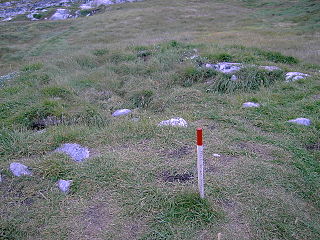
The Saqqaq culture was a Paleo-Eskimo culture in southern Greenland. Up to this day, no other people seem to have lived in Greenland continually for as long as the Saqqaq.

The Inughuit, or the Smith Sound Inuit, historically Arctic Highlanders or Polar Eskimos, are Greenlandic Inuit. They are the northernmost group of Inuit and the northernmost people in North America, living in Greenland. Inughuit make up about 1% of the population of Greenland.
Sirenik or Sireniki are former speakers of a divergent Eskimo language in Siberia, before its extinction. The total language death of this language means that now the cultural identity of Sirenik Eskimos is maintained through other aspects: slight dialectal difference in the adopted Siberian Yupik language; sense of place, including appreciation of the antiquity of their settlement Sirenik.

Inuit are a group of culturally and historically similar Indigenous peoples traditionally inhabiting the Arctic and subarctic regions of North America, including Greenland, Labrador, Quebec, Nunavut, the Northwest Territories, Yukon (traditionally), Alaska, and Chukotsky District of Chukotka Autonomous Okrug, Russia. Inuit languages are part of the Eskimo–Aleut languages, also known as Inuit-Yupik-Unangan, and also as Eskaleut. Inuit Sign Language is a critically endangered language isolate used in Nunavut.
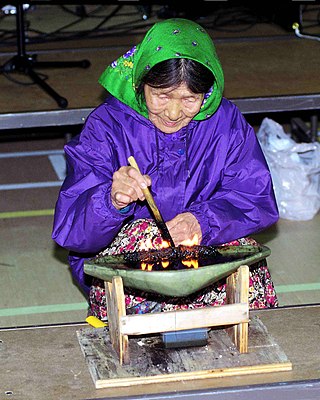
The Inuit are an indigenous people of the Arctic and subarctic regions of North America. The ancestors of the present-day Inuit are culturally related to Iñupiat, and Yupik, and the Aleut who live in the Aleutian Islands of Siberia and Alaska. The term culture of the Inuit, therefore, refers primarily to these areas; however, parallels to other Eskimo groups can also be drawn.

The Greenlandic Inuit are the indigenous and most populous ethnic group in Greenland. Most speak Greenlandic and consider themselves ethnically Greenlandic. People of Greenland are citizens of Denmark.

Indigenous peoples of the Subarctic are the aboriginal peoples who live in the Subarctic regions of the Americas, Asia and Europe, located south of the true Arctic at about 50°N to 70°N latitude. This region includes the interior of Alaska, the Western Subarctic or western Canadian Shield and Mackenzie River drainage area, the Eastern Subarctic or Eastern Canadian Shield, and most of Fennoscandia, Northwestern Russia and Siberia. Peoples of subarctic Siberia and Greenland are included in the subarctic; however, Greenlandic Inuit are usually classified as Indigenous peoples of the Arctic.
The Arctic Council Indigenous Peoples’ Secretariat (IPS) is a secretariat for the six international Indigenous organizations affiliated with the eight-nation Arctic Council. The IPS does not represent indigenous peoples or their organizations, but assists those organizations in presenting their causes, and helps to disseminate information among them. IPS was established in 1994 under the auspices of the Arctic Environmental Protection Strategy (AEPS). It was around the same time that the category of Permanent Participants was being developed and applied to the three indigenous peoples’ organizations then observers in the AEPS. When the Arctic Council was established in 1996, both the Permanent Participants and IPS was reinserted into the new intergovernmental framework. Since commencing business in 1994, the role of the secretariat has been to facilitate contributions from the Permanent Participants to the cooperation of the eight Arctic states and to assist the Permanent Participants in performing, mainly communicational task.

The Naukan, also known as the Naukanski, are a Siberian Yupik people and an Indigenous people of Siberia. They live in the Chukotka Autonomous Region of eastern Russia.

Eskimology or Inuitology is a complex of humanities and sciences studying the languages, history, literature, folklore, culture, and ethnology of the speakers of Eskimo–Aleut languages and Inuit, Yupik and Aleut, sometimes collectively known as Eskimos, in historical and comparative context. This includes ethnic groups from the Chukchi Peninsula on the far eastern tip of Siberia in Russia, through Alaska of the United States, Canada's Inuit Nunangat, including the Inuvialuit Settlement Region, Nunavut Nunavik and Nunatsiavut, through NunatuKavut, to Greenland of Denmark. Originally, an Eskimologist or Inuitologist was primarily a linguist or philologist who researches Eskimo or Inuit languages.

